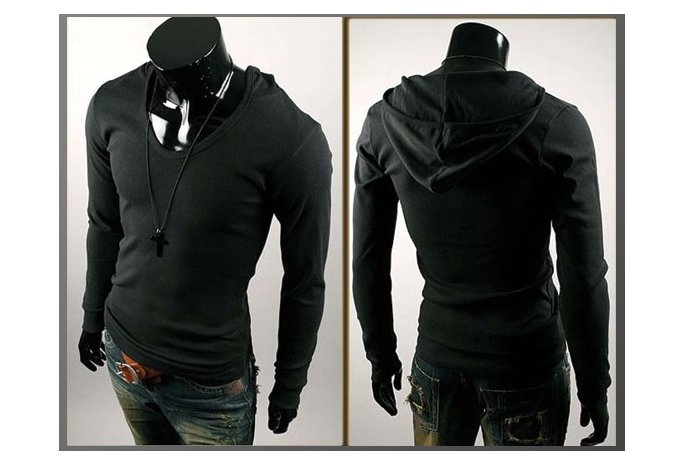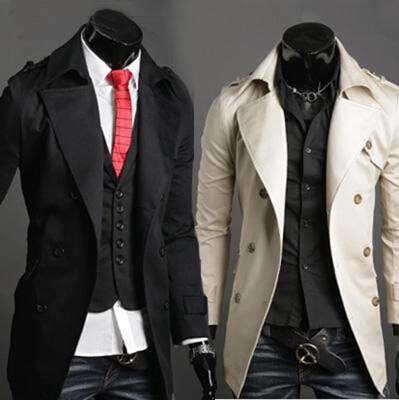Mens Fashion Clothing Biography
Source:- Google.com.pkClothing is fiber and textile material worn on the body. The wearing of clothing is a feature of nearly all human societies. The amount and type of clothing worn is dependent on physical stature, gender, as well as social and geographic considerations.
Physically, clothing serves many purposes: it can serve as protection from weather, and can enhance safety during hazardous activities such as hiking and cooking. It protects the wearer from rough surfaces, rash-causing plants, insect bites, splinters, thorns and prickles by providing a barrier between the skin and the environment. Clothes can insulate against cold or hot conditions. Further, they can provide a hygienic barrier, keeping infectious and toxic materials away from the body. Clothing also provides protection from harmful UV radiation.
Clothes can be made out of fiber plants such as cotton, plastics such as polyester, or animal skin and hair such as wool. Humans began wearing clothes roughly 83,000 to 170,000 years ago.
Different cultures have evolved various ways of creating clothes out of cloth. One approach simply involves draping the cloth. Examples of garments consisting of rectangles of cloth wrapped to fit include the dhoti for men and the sari for women in the Indian subcontinent, the Scottish kilt and the Javanese sarong. The clothes may simply be tied up, as is the case of the first two garments; or pins or belts are used to hold the garments in place, as in the case of the latter two. The cloth remains uncut, and people of various sizes or the same person at different sizes can wear the garment.
Another approach involves cutting and sewing the cloth, but using every bit of the cloth rectangle in constructing the clothing. The tailor may cut triangular pieces from one corner of the cloth, and then add them elsewhere as gussets. Traditional European patterns for men's shirts and women's chemises take this approach.
Modern European fashion treats cloth much less conservatively, typically cutting in such a way as to leave various odd-shaped cloth remnants. Industrial sewing operations sell these as waste; home sewers may turn them into quilts.
In the thousands of years that humans have spent constructing clothing, they have created an astonishing array of styles, many of which have been reconstructed from surviving garments, photos, paintings, mosaics, etc., as well as from written descriptions. Costume history serves as a source of inspiration to current fashion designers, as well as a topic of professional interest to costumers constructing for plays, films, television, and historical reenactment.
A primary function of clothing is to improve the comfort of the wearer by providing protection against the elements. Clothing provides protection from sunburn in warm weather, and protection from frostbite in cold weather. Shelter reduces the need for protective clothing. For example, coats, hats, gloves, and other superficial layers are normally removed when entering a warm home. Clothes also reduce risk during activities such as work or sport. Some clothing protects from specific environmental hazards, such as insects, noxious chemicals, weather, weapons, and contact with abrasive substances. Conversely, clothing may protect the environment from the clothing wearer, as with doctors wearing medical scrubs.
Humans have shown extreme inventiveness in devising clothing solutions to environmental hazards. Examples include: space suits, air conditioned clothing, armor, diving suits, swimsuits, bee-keeper gear, motorcycle leathers, high-visibility clothing, and other pieces of protective clothing.
Clothing also performs a range of social and cultural functions. Clothing can be used to indicate social status and convey individual, occupational, and sexual differentiation.[9] In many societies, norms about clothing reflect standards of modesty, religion, gender, and social status. They cover parts of the body that social norms require to be covered, act as a form of adornment, and provide an expression of personal taste and style.
Mens Fashion Clothing Mens Fashion 2014 Boots Suits Winter Magazine Tumblr Shoes Shirts Photos Pics
Mens Fashion Clothing Mens Fashion 2014 Boots Suits Winter Magazine Tumblr Shoes Shirts Photos Pics
Mens Fashion Clothing Mens Fashion 2014 Boots Suits Winter Magazine Tumblr Shoes Shirts Photos Pics
Mens Fashion Clothing Mens Fashion 2014 Boots Suits Winter Magazine Tumblr Shoes Shirts Photos Pics
Mens Fashion Clothing Mens Fashion 2014 Boots Suits Winter Magazine Tumblr Shoes Shirts Photos Pics
Mens Fashion Clothing Mens Fashion 2014 Boots Suits Winter Magazine Tumblr Shoes Shirts Photos Pics
Mens Fashion Clothing Mens Fashion 2014 Boots Suits Winter Magazine Tumblr Shoes Shirts Photos Pics
Mens Fashion Clothing Mens Fashion 2014 Boots Suits Winter Magazine Tumblr Shoes Shirts Photos Pics
Mens Fashion Clothing Mens Fashion 2014 Boots Suits Winter Magazine Tumblr Shoes Shirts Photos Pics
Mens Fashion Clothing Mens Fashion 2014 Boots Suits Winter Magazine Tumblr Shoes Shirts Photos Pics
Mens Fashion Clothing Mens Fashion 2014 Boots Suits Winter Magazine Tumblr Shoes Shirts Photos Pics










No comments:
Post a Comment